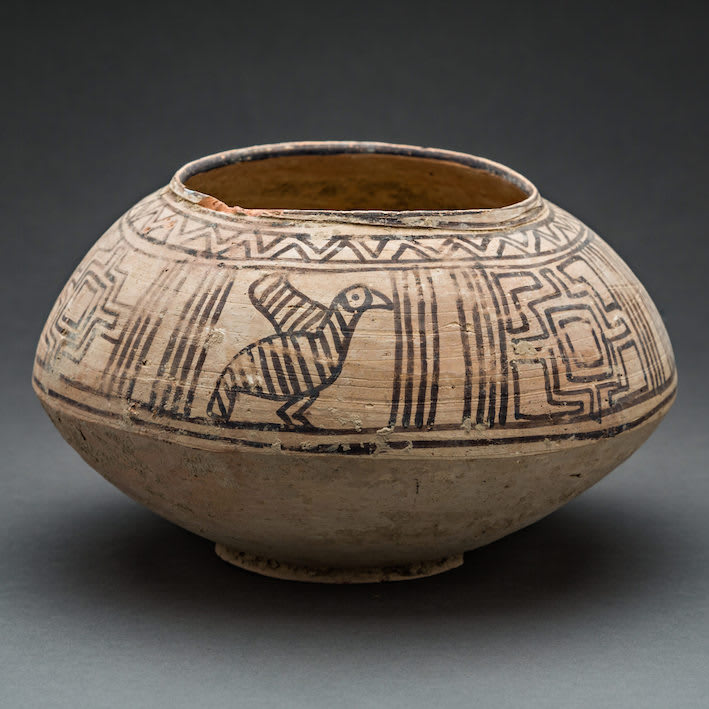Painted Terracotta Vessel, 3000 BCE - 2000 BCE
Terracotta
12.7 x 21 cm
5 x 8 1/4 in
5 x 8 1/4 in
SF.166
The Indus Valley Civilisation was a Bronze Age civilisation (3300–1300 BC) that mainly flourished in the northwestern regions of South Asia, extending from what today is northeast Afghanistan to Pakistan...
The Indus Valley Civilisation was a Bronze Age civilisation (3300–1300 BC) that mainly flourished in the northwestern regions of South Asia, extending from what today is northeast Afghanistan to Pakistan and northwest India.
Along with ancient Egypt and Mesopotamia it was one of three earliest civilisations of the world and of the three, the most widespread.
At its peak, the Indus Civilisation may have had a population of over five million.
Though the Indus Valley script remains undeciphered, the numerous seals, statuary and pottery discovered during excavations, not to mention the urban ruins, have enabled scholars to construct a reasonably plausible account of the Indus Valley civilization.
Inhabitants of the ancient Indus river valley developed new techniques in handicraft (carnelian products, seal carving) and metallurgy (copper, bronze, lead, and tin). The Indus cities are noted for their urban planning, baked brick houses, elaborate drainage systems, water supply systems, and clusters of large non-residential buildings.
IV 3676 IV 3677 IV 3678
Along with ancient Egypt and Mesopotamia it was one of three earliest civilisations of the world and of the three, the most widespread.
At its peak, the Indus Civilisation may have had a population of over five million.
Though the Indus Valley script remains undeciphered, the numerous seals, statuary and pottery discovered during excavations, not to mention the urban ruins, have enabled scholars to construct a reasonably plausible account of the Indus Valley civilization.
Inhabitants of the ancient Indus river valley developed new techniques in handicraft (carnelian products, seal carving) and metallurgy (copper, bronze, lead, and tin). The Indus cities are noted for their urban planning, baked brick houses, elaborate drainage systems, water supply systems, and clusters of large non-residential buildings.
IV 3676 IV 3677 IV 3678



